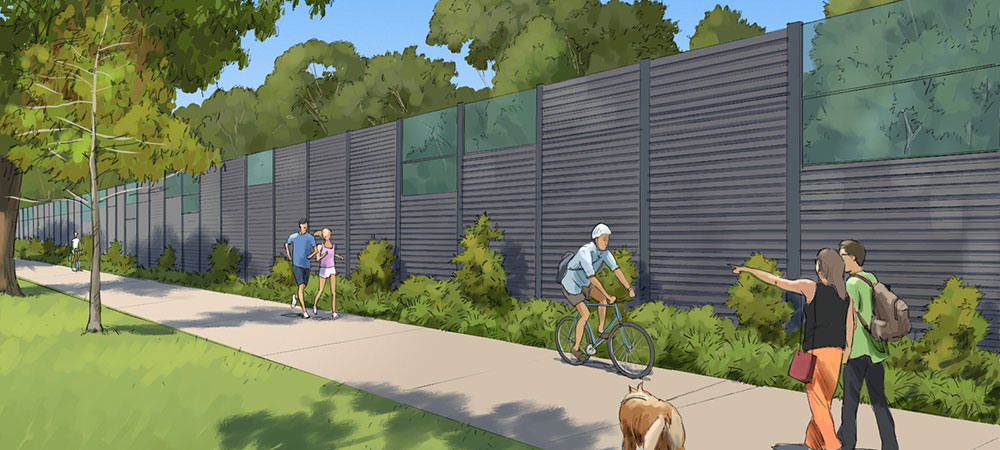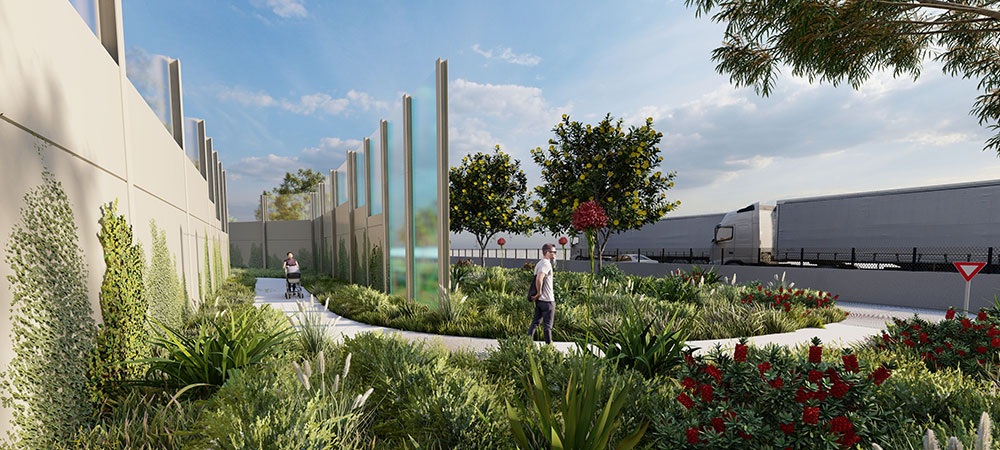Coomera Connector Stage 1—Active transport

Improving the active transport network is a key objective for the Department of Transport and Main Roads and the Coomera Connector Stage 1 project. A new shared path will provide opportunities to the community which have previously been unavailable.
Coomera Connector Stage 1 will include a dedicated path for all active transport users. The new path will be predominantly 4m wide along the 16km route, from Shipper Drive in Coomera to Nerang–Broadbeach Road in Nerang.
All forms of active transport will be able to use the new shared path including commuter and leisure bike riders, pedestrians, people with prams, mobility scooters and wheelchairs.
Connecting communities
The shared path will improve active transport connectivity for the Gold Coast’s northern suburbs by providing a high-quality direct north-south route between Shipper Drive and Nerang–Broadbeach Road. It will deliver significant improvement in active transport accessibility and connectivity between destinations in Coomera, Hope Island and Helensvale with a new active transport connection across the Coomera and Nerang rivers.

Connecting to existing local footpaths, the new shared path will provide additional access between local communities and amenities, including the following key hubs:
- Marine precinct in Coomera
- Heavy rail stations at Coomera, Helensvale, Nerang and the new Hope Island station
- Light rail stations at Helensvale and Parkwood
- Helensvale Westfield
- Metricon Stadium
By providing better bicycle riding access, the Coomera Connector will make it quicker and safer for many more people to get to these key community hubs.
Given the narrow corridor in some locations of Stage 1, the active transport path may be next to the new motorway lanes but separated by concrete safety barriers or noise barriers. Where there is sufficient room and no design constraints, the shared path may be located away from the motorway and closer to residential catchments.
The path will form a Principal Cycle Route providing a spine from which local cycle networks are built.
The shared path will also offer rest stops at Coomera, Helensvale and Arundel that will include shelter, seating and landscaping.
What are the benefits of active transport?
Every time an active transport option is provided there is an opportunity to:
- increase our health, fitness and wellbeing
- improve our mobility and disability access
- reduce our impact on the environment
- make our transport system more efficient.
What access improvements will be made for people with disabilities?
Mobility devices, such as wheelchairs and mobility scooters, are an essential part of daily life for people with a reduced mobility. Not only do they improve access to everyday services, but they can also greatly enhance an individual’s quality of life.
To ensure accessibility for all users, the shared path included in Stage 1 of the Coomera Connector has been designed using Austroads’ Guide to Road Design and Traffic Management.
Features of the project to improve pedestrian and mobility safety include:
- audio tactile devices at signalised intersections
- kerb ramps at all key crossing locations
- mid-block pedestrian refuges on local roads near interchanges that connect with the Coomera Connector.
People with disabilities and specific mobility needs should contact Transport and Main Roads to discuss their active transport connectivity requirements while construction is underway.

